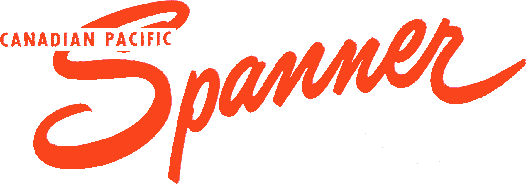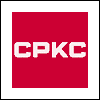
March - 1948
Canadian Pacific Railway
A Study Of Our Motive Power (1 of 3)
By Inventory Classification
By A.E. MIMMS

One of the most interesting phases in the activities of any railroad company is brought to light, whenever a review of their locomotive roster is undertaken. This paper presents such a progressive analysis of Canadian Pacific motive power acquirements over a long period of years.
Diverse types of locomotives enter the inventory by purchase, construction, or absorption of motive power of affiliated lines. These, which in many cases have been produced in plants of various manufacturers no longer active in this field, present an opportunity for a historical record of considerable value.
The object of these articles, therefore, is to show the evolution of the twenty-four separate groups, or types, of motive power, in serial order, as these entered the Canadian Pacific inventory. It is notable that twenty-five different locomotive builders in the United States, England, Scotland, Germanym and Canada, have produced engines which have been used in Canadian Pacific Railway service.
Amongst these are such famous American builders, as: Baldwin, Brooks, Danforth, Grant, Hinkley, Manchester, Mason, Portland, Pittsburgh, Rhode Island, Richmond, Rogers, Schenectady, and Taunton. England is represented by Avonside, Birkenhead, North British and Sharp-Stewart & Company. Germany appears in the product of the Saxon Engine Works, while Canada is represented from the inception of the Company, by locomotives from the Canadian Locomotive and Engine Works at Kingston, Ontario, and later by the Montreal Locomotive Works Limited.
When the Canadian Pacific commenced operations in 1881-1882, practically every railway in America was predominantly powered by locomotives of the 4-4-0 type, used both in freight and passenger service. To such an extent was this ubiquitous type distributed, that they were popularly named the "American" or "Standard" type.
It is, therefore, not surprising to note that the first locomotives acquired by the Canadian Pacific were of the 4-4-0 type, or that in the short period to the end of 1885, "American" type locomotives in service attained a total of 303 units.
The oldest Canadian Pacific Railway locomotive of which records are available was a 4-4-0 type, built by the Boston Locomotive Works, in 1854. It had 14 x 22 inch cylinders, 57 inch diameter driving wheels, and was acquired from the St. Lawrence & Ottawa Railway, in 1885.
Locomotives "Countess of Dufferin" and No. 374 now maintained as monuments at the entrance of the Canadian Pacific into Winnipeg and Vancouver, were both of the 4-4-0 type. A typical locomotive of the period was engine No. 285, the first to be constructed by the Company. Built at the Company's Delorimier Avenue Shops, in September 1883, this locomotive had 17 x 24 inch cylinders, 70 inch diameter drivers, 150 pounds boiler pressure, and developed 12,600 pounds, equivalent to 12.6 perent tractive effort. Acquisition of 4-4-0 type locomotives continued until 1932, by which time 426 locomotives of this type had appeared in the inventory, of which, only four now remain in service.
Only one locomotive of the 0-4-2 type was acquired, being received on absorption of the Canada Central
Railway motive power. It was built by the Danforth Locomotive and Machine Co., Paterson, N.J. and had 16 x 24
inch cylinders, with driving wheels 47 7/8 inches in diameter. No other data are available.

Among the earliest locomotives acquired by the Canadian Pacific were two 2-6-0 Mogul type engines, procured from the Canada Central Railway in 1881-1882. These engines were built by the Scranton Locomotive Works, had 18 x 22 inch cylinders and driving wheels of 55 inch diameter. During the same period, two 2-6-0 locomotives, having cylinders 18 x 24 inch and 57 inch driving wheels were purchased from the Danforth Locomotive and Machine Company. Further Moguls appeared at intervals, until 1931, when the final such unit, having 20 x 26 inch cylinders with 56 inch driving wheels, built by Montreal Locomotive Works, was acquired from the Algoma Eastern Railway.
The first of this type to be constructed by the Canadian Pacific were built in 1888. These had 18 x 24 inch cylinders, driving wheels of 57 inches diameter, and were later classified as J2a class. The frequent use of the term Mogul as indicative of a large locomotive is difficult to understand, since none of the 2-6-0 type locomotives built could be considered as usually powerful units.
Only 55 of these locomotives were incorporated into the inventory, of which only two class J3d engines originally built in 1888, and rebuilt with larger boilers in 1912-1913, remain in service.
The only 0-4-0 switching type locomotives used on the Canadian Pacific, were four engines purchased from the Rhode Island Locomotive Works in 1882, which had 16 x 22 inch cylinders and 50 inch diameter drivers. Two more were acquired with subsidiary lines in 1885. The group disappeared at an early date.
Locomotives of the 0-6-0, six-wheeled switcher type, were first introduced on the Canadian Pacific in 1882, when five engines with 17 x 24 inch cylinders, having 51 inch driving wheels, were purchased from the Hinkley Locomotive Works, Boston, Massachusetts. Construction of this type of locomotive by the Canadian Pacific Railway commenced in 1891, with construction of one engine having 18 x 24 inch cylinders with 51 inch driving wheels, thirty of which class were constructed during the next thirteen years.
In 1900, construction of the familiar U3 class locomotives commenced, and was continued up to 1913, until
this class was comprised of 195 units. Of the total of 240 0-6-0 type locomotives in the Company's roster, only
82, all built in CPR Shops, remain in service at this time.

The Canadian Pacific Railway's wide adoption and use of the 4-6-0 Ten-wheeled type locomotive, has probably had no counterpart on any other railroad in Canada or the United States. From 1884, when four of these locomotives were acquired from affiliated lines, until May 1915, when a group of eight engines of the D4g class were completed at Angus Shops, production or purchase of 4-6-0 type locomotives was almost continuous, since such units were added each successive year for twenty-seven years from 1889, with only three exceptions in 1895, 1896, and 1901.
Some of the locomotives built by the Company in 1891, for passenger service, were early examples of semi-streamlining, since the sand boxes, dome casings, cab roofs, and tender tank corners were rounded off in order to improve appearance. Other roads soon adopted some of the features of these engines.
In 1893, engine No. 625 was selected to head a Canadian Pacific passenger train to be exhibited at the World's Fair in Chicago. This train was awarded first prize in its class, as the outstanding example of motive power and rolling stock of its day.
There were many details about these engines which became recognized as specific features of Canadian Pacific locomotive design. Clean cut lines, elimination of awkward square corners, ring-capped smokestacks, brass-rimmed number plates, brass flag staffs, highly polished Russian iron boiler jackets, silvery toned bells, and deep-toned, single-chamber, whistles were so distinctive, that these locomotives became well known all over the world. Illustrations of the equipment appearing in technical and other publications, had much to do with the universal popularity of the transcontinental "Imperial Limited" of those days.
The first electric headlights used in Canada were applied to Canadian Pacific 4-6-0 type locomotives. These
headlights were of the "Edwards" carbon type, and in addition to illuminating the track, threw a
vertical safety beam, by use of a reflector. The vertical beam feature appears again many years after in diesel
electric designs. Since these locomotives were being built during the period of development of compound
locomotives, it could be anticipated that some notable examples of compound engines would appear on the Canadian
Pacific.
(To be continued)
 and is reprinted here with their permission. All photographs,
logos, and trademarks are the property of the Canadian Pacific Railway Company.
and is reprinted here with their permission. All photographs,
logos, and trademarks are the property of the Canadian Pacific Railway Company.